The NSW Government has been seeking advice on improving the Peak Demand Reduction Scheme, as it works to harmonise the state battery incentive in anticipation of a federal rebate. Here’s how the bureaucrats are working to fix a myriad of problems, and what installers want to see changed.
For homeowners, NSW’s Peak Demand Reduction Scheme (PDRS) promises point-of-sale discounts for installing batteries—a decent win for your wallet and the grid.
However, to secure the rebate dollars, many solar installers are wrangling with red tape, fine print, third-party agents and other certificate trading ticket clippers. It all means payment delays behind the scenes.
Some say the rules help weed out dodgy operators. Others reckon they’re strangling good businesses and making battery upgrades harder than they should be.
It’s got to the point where some installers simply aren’t interested in claiming the cash because the compliance costs eat up the available funds.
This is on top of concerns that the NSW scheme isn’t currently stackable with the incoming federal Cheaper Home Batteries Program rebate, even though the feds have promised it will be.
Let’s unpack some concerns and how the NSW government is responding.
‘Battery Ready’ Inverters And The 10-Year Warranty Rule
One common question is: Can I add a battery to my existing hybrid inverter under the rebate scheme?
The short answer is yes — as long as the inverter originally came with a 10-year warranty.
Why? The idea is to cut out cheaper inverters that only ever offered 5 or 7-year coverage — a rough indicator of build quality.
Now, just because a product had a long warranty on paper doesn’t mean the company itself will last. Government officials acknowledge the problem, saying they’re looking for better ways to measure real-world quality.
When even a concern as big as LG Solar can simply wind up panel production, paper promises only go so far.
Is a Long Warranty Actually Worth Anything?
The government wants value for the taxpayer dollar, proper 10-year assets, not junk.
However, without a strong history or accelerated energy performance testing, they’re relying on warranties and other documents as proxies for quality.
It’s not ideal but with home batteries being a fairly new field of technology, and they’re open to suggestions about how to write rules to mandate better-quality hardware.
The first announcement of the scheme was so stringent even market leader Tesla Power & Sungrow were ineligible, so there’s already a precedent for making adjustments.
The trick is finding a condition or warrantable specification that can both encourage better quality and be possible to write into law.
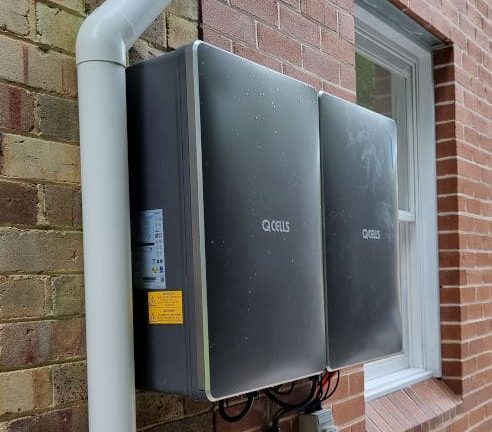
Q-cells is another example of a company to leave Australia’s solar scene.
Price might be the best indication of quality, but you can’t set a minimum price in legislation.
What Installers Really Think: A Poll from the Trenches
SolarQuotes sought advice from one of the country’s most active solar installer forums, and 69 quality-focused industry professionals gave us feedback on how the NSW rebate system is running. It wasn’t a scientific poll, but the vibe was clear.
- 44% want inspections before rebates are paid out — to stop cowboys cutting corners.
- 8% support inspections plus a demerit point system.
- 21% say manufacturers must have proper Australian warehouses and locally staffed support — not just a serviced office and random supply chain.
- 8% think official warranty failure reporting is worth trying.
- 5% like the idea of an insurance pool to cover warranties and recycling.
While installers are usually allergic to red tape, more than half of our straw poll are calling for technical inspections of some sort, saying it is the only way to protect decent operators from being undercut.
Comments from the Field
Nick (paraphased):
“It’s ridiculous the compliance overreach and audit process before creating certificates so retailers can get paid. It’s choking cash flow and small business.
(Installers are framing the conversation with customers like this:
You won’t have control of your investment under the VPP1 so don’t take the rebate.
Makes it easier for the installer and customer when they don’t have to worry about it.)
“I don’t see why they can’t use a stat dec like SRES… and then audit as needed when they have resources.”
“I’ve just heard that the IPART auditors are delaying payments, waiting for manufacturers to change wording on warranty documents. The compliance overreach with the program is ridiculous. I get they’re trying to stop stinks, but it won’t.”
“The other sticking point is DNSP performance. The networks must be forced to update the DER register in a timely fashion or have these requirements removed.”
(third party compliance detail must be correct but installers have no power to make the poles and wires authority to do their bit)
Mike:
“Please tell them to cap the number of PRCs instead of the max battery size that qualifies. Crazy to give nothing for a 28 kWh or greater!”
Mick:
“The PDRS cap should change to be a cap on payment, not a cap on kWh. It would open up eligibility on so many jobs even if Labor don’t get in and this federal scheme never happens.”
Greig:
“100% the cap needs to go.”
Louis:
“They have got to speed up approvals and payments, otherwise there will be no companies left to install the batteries in the first place.”
Isaac:
“Being able to claim PDRS only once is a bit weird. So is the 28 kWh cap.”
“Compulsory inspections is not ideal.. it may bring up the standard of work but for regional NSW… such a hassle.”
“Random audits are good. They should do their best to look at a number of installs from each installation company.. especially the higher volume crews.”
“If there’s non-compliances found, then yeah delve deeper into their previous installs… So yeah sure suspensions make sense comparatively.”
Brent:
“Mandate UL9540a safety battery certification.”
Cash Flow Crunch
Multiple installers said cash flow is being strangled by audit delays and compliance overreach.
There are justifiable gripes: like rebates held up until some fine detail, like a manufacturer warranty document wording, is fixed. That leaves small businesses in limbo while OEMs flounder to update PDFs to satisfy the rules.
Others want a system like the one used for solar rebates under the Small-scale Renewable Energy Scheme (SRES). Just sign a statutory declaration, get paid, and accept that random audits may follow.
The government’s response? They know the current process needs work, and they’re looking at ways to speed up payment and streamline how audits are triggered.
Audit Quality Must Be Improved
It’s been noted that NSW Government audits have been undertaken by qualified people who aren’t experienced in solar.
This has installers ticked off because the audits have produced non-existent problems that hold up payments.
Some PDR certificate traders have worn the risk and paid installers, but others are refusing until the audit process is completed and everything is technically ticked off.
28 kWh Cutoff Is An Artificial Ceiling
The current cap for rebate eligibility is 28 kWh of battery capacity, which has many installers scratching their heads.
What about homes (or small businesses) that want more? Especially seeing as the mooted federal CHB scheme will subsidise 50kWh and doesn’t cut out until 100kWh.
Officials say the cap came from modelling used in ACT’s NextGen trial, which NSW tweaked to line up with South Australia. But the key goal of the PDRS is just that — peak demand reduction.
Both the federal incentive and the PDRS are one-time offers; there’s no second round available for expansions.
NSW says they’re focused on first-time battery installs because those offer the biggest bang for the grid. Additional or oversized batteries? Not so much.
However the industry is unanimous, this cap should be on payments, not kilowatt hours.
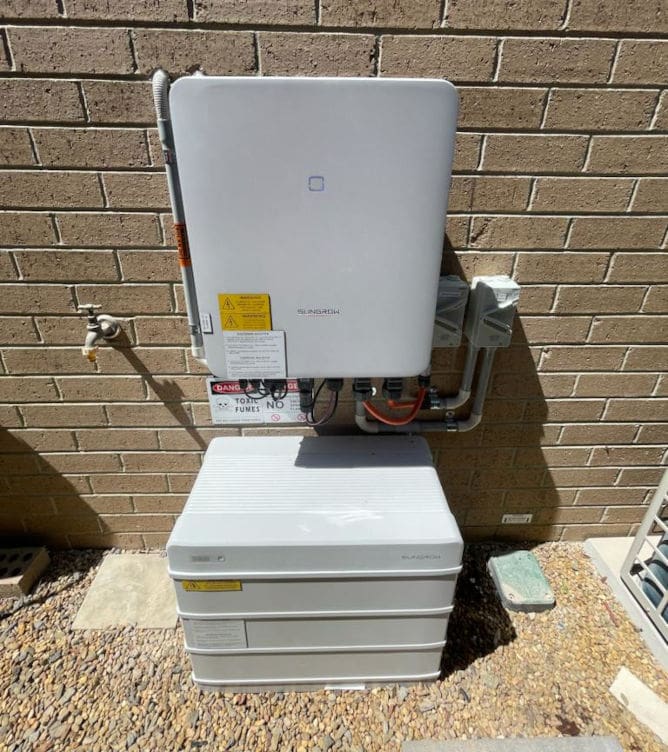
This 9kWh battery can’t be expanded without moving the inverter. Considering the tap, gravel surface and the air conditioner, I would move all this equipment anyway.
What About UL9540a Certification?
The government says this is “on the radar”, but they’re cautious about setting requirements that could favour one supplier over another unless there’s a clear safety case.
It’s been pointed out that the international laboratories doing this certification mightn’t get new products tested in a timely manner.
The $20,000 Question
Home Building Compensation (HBC) insurance (formerly known as home warranty insurance) is mandatory if a job goes over $20,000.
That’s led some installers to quote smaller battery sizes just to avoid the extra paperwork and expense.
The government says installers must comply with all relevant legislation. Though they don’t explicitly require proof of HBC insurance under the scheme, the climate and energy department can’t grant exemptions from legislation it doesn’t control.
Talk about unintended consequences:
Mandating a smoke detector to go with a new PDRS home battery might feed irrational fears about lithium battery fires. However the real cost comes when all the smoke detectors on the premises need updating; because they must be interlinked under the current building code.
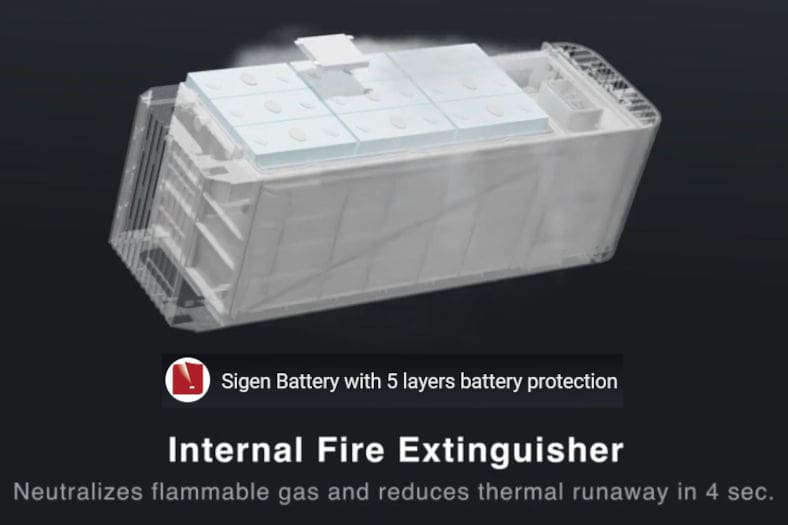
Sigenergy have included an internal fire surpression measure.
Bottom Line: Progress, But Still Clunky
The NSW government deserves credit. They’ve taken installer feedback seriously, admitted when things aren’t working, and committed to fixing what they can.
But the scheme is still clunky. And if installers walk away because it’s too hard to get paid, the rebate won’t help anyone.
The homeowners, who are being leveraged for private investment, will miss out, and the broader public will still be left with a grid that needs more costly upgrades sooner.
If you’re a customer, talk to your installer. Ask how they handle rebates, and how long payment takes. A good one will be honest about the system’s flaws — and still get you a solid battery at a fair price.
The rebate might come with strings attached. But with the right installer, it can still be worth it.
For more on what the federal government rebate will do to take the cost off a battery wherever you are in the country, our Battery Calculator and Solar & Battery Calculator now factor in the federal discount.
Footnotes
- There’s a second voluntary part to the scheme where more money is available to those who sign up to a Virtual Power Plant, so the grid will pay to use your battery ↩

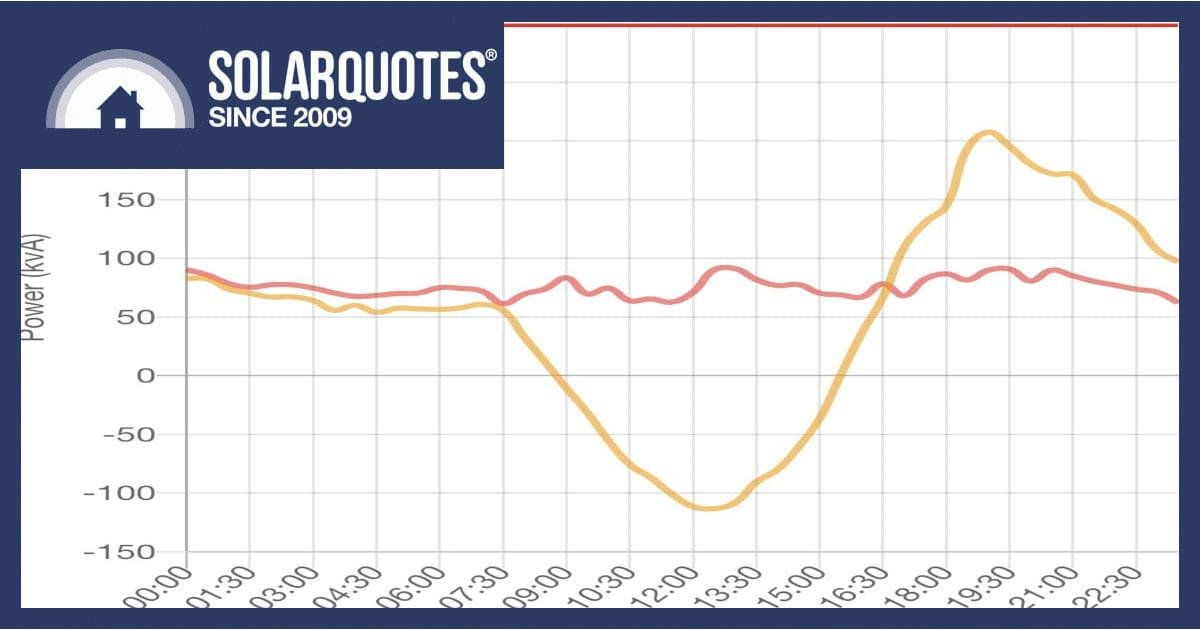
 RSS - Posts
RSS - Posts


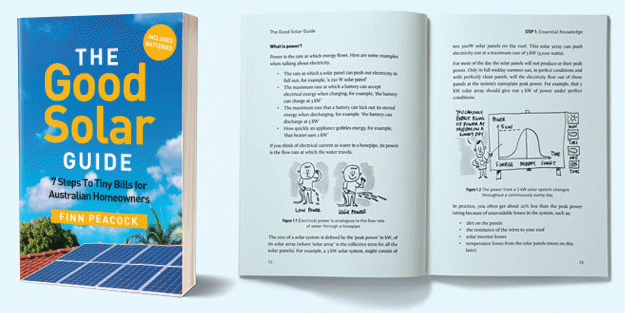
seriously? Ran the numbers for the battery I had installed last year as if it was new, NSW would give me a paltry extra $500 for flogging my battery in a VPP?
Who would be mug enough to take that deal?
I found this the case in SA too, and I expect in most other states it has been very unattractive to get onto any VPP plans I’ve seen offered.
Some actually have good FITs still, eg some QLD 13c vs SA / VIC 4c, but I think those days are numbered Australia wide.
It’s also clear some states are already moving towards offers with variable FIT payments, zero for solar soak hours (which may go negative one day), and quite generous offers for morning peak and late PM / evenings.
I guess this would be managed by battery / inverter software or Catch Power type devices for curtailment.
At least you control that, and not the retailer.
There’s always Amber too, when they get 5 min data and smart shift sorted better, and other wholesale models most likely on the way.
Good points Les.
Thanks for making them.
Andrew, both the paltry VPP bonus and 28 kWh capacity cap reveal that the current mission is consumption reduction, not additional grid supply. (That the 28 kWh should be a payment limit, not an exclusion trigger, seems self evident, though.)
But there remains the prospect of increasing VPP revenue after further coal plant closures, at times when gridscale batteries are depleted. At some price point, some households will be tempted into a VPP.
But, really, aren’t gridscale batteries a more economical means of grid buffering – free of burden on the national budget, as operators bear the entire capital cost? That’s my guess on how it’ll go – if done rationally.
There’s another battery farm, 1.6 GWh capacity, going in now. Keep doing that, and with domestic batteries chopping the heck out of peak demand, then we’ll eventually have a robust fossil-free renewable grid.
VPP doesn’t necessarliy mean you have to let a retailer “flog” your battery, you can go to a retailer like Amber who gives to access to the wholesale marker where you buy and sell power using your battery to suit you and your needs.
Should I get a batttery or not .?? Thats the decision and I wont sign up for vvp either. 6.6 kw and fromics 5kw invertor. Should I get a 10 battery or just use the panels only ..in winter the elec. Bill goes up summer it comes down .
What do you think
The beauty of elections promises…
Since it has been made official, everyone wants a battery installed yesterday (!)
Meanwhile we still don’t have a clue how to quote them properly because new legislation hasn’t been written, and we have been told old legislation is (maybe) changing to be compatible with the new scheme…
Most of the comments of fellow installers are valid points.
We need to remove the dodgy operators. This is too dangerous to let them do random installs. There are still too many of them, and I’m a little worried that the new scheme being under SRES may be a door to easy to open for them.
We need a scheme half-way between PDRS and SRES.
Thanks Mat,
It’s good to hear from the installers first hand.
Sounds great. I have 6.4 system and 5kw fronics inverter. How much for a decent battery and install ???
In which state are you based Ian?
“This is on top of concerns that the NSW scheme isn’t currently stackable with the incoming federal Cheaper Home Batteries Program rebate, even though the feds have promised it will be.”
Why link to a pre-election dated article – surely there is more news now we know Labor won?
Has no-one asked the NSW govt whether it intends to change its rules to allow a single install using state and federal incentives? And if so how and when?
Having worked in government I know silo mentality prevents joined up thinking. The Feds will say it’s all good but they can’t speak for their state party members.
Why can’t you get solar and battery installed in NSW under the Minns incentive then post July 1 add another battery or more under Albo’s scheme?
Hi Dave,
Details are still scant but the wheels are turning I’m sure.
The NSW government have been seeking input from industry figures on how to best make changes, and they’ve sought council from us at Solar Quotes, but that detail didn’t make the final cut sorry. I’ll berate the editor 😉
Rest assured there are some dilligent operators in the government who are looking for help to write better rules.
Per my post May 19
Announced Tuesday 10/6/25 – NSW battery incentive ends end of June. Unused funds to be deployed to double pmt to those who sign up for VPP
“The Smart Energy Council says a 6kWh battery at $6000-$8000 would meet the needs of nine out of 10 homes. The federal subsidy would be about $2232 and the NSW incentive to connect to a VPP would be about $444.
On an 11.5kWh battery, the federal subsidy would be about $4278 and the NSW support for a VPP connection would be $850.
On a huge 27kWh battery at about $30,000, the Commonwealth would pay for about $10,000, while NSW would offer $1500 to connect to a VPP.”
https://www.smh.com.au/environment/sustainability/better-bang-for-buck-nsw-to-cut-battery-subsidies-as-federal-scheme-kicks-in-20250610-p5m69e.html
The smart energy council have little idea would be my assessment after a statement like that.
80% of homes use less than 6kw of power once they lose power from their panels until the panels start up the next morning?
Sounds like rubbish to me..
The Smart Energy Council says a 6kWh battery at $6000-$8000 would meet the needs of nine out of 10 “1 bedroom units”.
I fixed it for you. 😉
Governments remember the ‘pink batts’ controversy, it’s become the thing they all want to avoid happening again (even though most of the problems with it were a political beat-up).
Hi Nick,
I’m glad you added the brackets. So good was the beat up that people now have a simple word association where pink batts = failure.
Sadly the propaganda was so effective it ended up throwing the insulation industry under the bus, just so they could blame the minister who was driving it.
As fast economic stimulus, in terms of installation fire safety, as an effective bulwark against rising energy costs, the pink batts scheme was a roaring success.
I think the formal enquiry into the scheme even found proportionally fewer incidents than during business-as-usual times.
Imagine if the government had taken advice earlier in their last term and targeted household electrification. It would have dramatically accelerated renewables roll-out and defused a lot of the politics of energy costs.
Hi Nick,
As I recall there was a lot of pearl clutching about house fires! However the fires per hundred installation metric was improved by a couple orders of magnitude?
It would have been grand if the opposition had simply accepted that insulation and efficiency are a public good.
I think they were sh!t scared that were he successful, an environment minister could become even more popular, and so they set on a plan to “Get Garret” no matter the cost.
All those small businesses who invested in new plant, machinery and people were just collateral damage.
As a consumer I had to wait 3 months till I received my rebate, and that was after complaining
What rebate are you talking about? STC? PDRS?
PDRS
Did you claim the PDRS yourself to an Accredited Certificate Provider?
…
Or did your dodgy installer do the job and didn’t discount the PDRS rebate upfront?
installer did the paperwork but told me rebate would come 4-6wks later (was an installer i found on here actually)
they did my solar 8-9 months before the battery and gave me the STC rebate upfront so when it came to doing the battery i took their word for it.
when the PDRS rebate turned into a 12wk delay I complained and they finally paid it, seems out of their pocket.. going by the govt delays mentioned in this article
HibI got a 6.6 solar and a fromulus inverter. Now I dont understand the battery idea. Sign up to vvp. Is it worth it ?? Or dont even bother about a battery. I have 4 adults living with me . Some quotes for a battery 13.5 or 10w are all different prices . I need someone who I can trust because there is a lot of dodgy installers out there. Thanks.
Should I buy a battery ?? And get a good rebate or dont bother ?? Vvp worth ot or not
Ian, if you self consume a lot during solar production, you will be saving quite a bit off your bills without solar.
With 4 adults living with you (5 altogether ?) boy, that will be a fair daily usage.
A battery would be a good investment with NSW and federal rebates, and no doubt you could use that battery power in peak times before / after solar soak . . . IF you can charge it sufficiently from solar daily, as well as cover your home needs during production.
6.6kw of solar is not a great deal now, in Winter you will struggle to get a lot of benefit, BUT you can charge the battery during a cheaper solar soak period, there are some great deals out there for free or cheap rates for anything from 2 – 5 hours of solar soak time.
I regularly see offers for a couple of free hours during the middle of the day, or 14c odd for 4 or 5 hours.
But with these cheap rates comes high peak charges, like 75c . . . ok if your battery can cover you, you might need quite a bit of kWh battery storage.
Thanks for that. What size battery do you think I need. ?? Or just wait awhile and see wait till summer comes ??
continued . . .
Maybe more battery storage than your 6.6kw PV can manage to charge ok through the worst production times in Winter, Autumn / Spring shoulder months.
I don’t know how old your system is, but generally Fronious is perfect to work with BYD modular batteries, where you can add modules later if you find you need more.
You really need an expert to look at what you have, how it works for you now, what adding a battery could do to help you load shift to when you can benefit most from a battery, and other general things that might affect your situation . . . plans / tariffs available with different retailers, what FIT you get now and into the near future (all going down), how your supplier allows solar to your region (export limits, battery installments), any site issues like shading that might have a bearing, a whole host of things.
Good luck.
Oh, and I would not bother with a VPP right now, wait to see where variable FITs go in the near future, just use a possible battery to get your bill down, and lower the feed in to the grid to whatever scraps are left.
You’re still taking pressure off the grid looking at it from a community benefit point of view.
Thanks for that. I may no get a battery now maybe wait a while . Thanks for infor.
Hi again Ian, I’m no expert, just my opinions on this from the research and just thinking things through a bit.
I would think no one on here could begin to give you good advice on whether to get a battery, or what kWh storage you might need, without seeing your bills (four seasons) and understanding your power usage needs / times, looking at your power retailer options / plans / tariffs that would suit with a battery, metering, etc.
It’s a virtual minefield.
I would think a good solar / battery person COULD know what to look for, deeper than looking at bills info, but do they ?
From your 5 adult household perspective, I would have thought that any solar sales person most likely could have looked at things and said “mate, you probably need more than entry level PV on the roof”, some just want to make the easy quick sale and don’t really look at what the customer needs.
Hi Les,
Thanks for your help. We always appreciate when the public are willing to build trust and share what they know.
It’s worth remembering you can calculate a battery size yourself and get guidance on solar with our tools.
If the solar salesperson you encounter isn’t interested in what you’ve already learnt you can show them the door.
What do we think about telstra pwerwall 2 battery ??.10 year warrenty 11.5kw
Dang the character limit here . . .
SolarQuotes has the 3 quote thing for solar, and also for battery quotes.
Maybe that’s a starting point, along with reading up the solar quote articles on batteries, the battery 101 type articles.
Getting some ground knowledge gets you set up to know roughly what you need, and then be comfortable with what various companies offering quotes are focussed on, their sales targets, or their customers.
Luckily these schemes are all with the the proviso that the system must be “VPP Capable”, not you must actually join a VPP.
IMHO why would you let someone else drain your BESS when it suits their requirements and maximising profit for them, your much better off running your own grid arbitrage if you have the geek know how, or else using something like Powston and their system to give your BESS the smarts to automatically buy/sell for you (and for your $ benefit).
Justin, yes it bothers me a little that is specifically tied to being VPP capable.
Why ? Could they come back at recipients in a year, two years, or whatever, and say hey, we gave you a battery cheaper, time to contribute a little back.
Now I would also have thought that having solar and a battery grid connected, able to send excess power to the grid, would AUTOMATICALLY see the setup with smart metering as VPP capable, so maybe that’s what they mean with this terminology.
It’s not clear.
Hi Justin , I have no idea on these things . But most installers want you to join vvp . Part of getting a rebabte .
Im interested getting a battery and getting one at a good price installed . But everyones right about dodgy gear avaiable.
And installed price added extra . Thanks
Hi Ian,
In my experience it’s the customer who’s enthusiastic about VPPs. Installers are known to use them as a reason to discourage connections because they don’t wan’t to be the technical support boffin when the WiFi goes down or something else breaks.
If you have a legacy feed in tariff, you also need to determine if any modification you do to your system will end that legacy scheme. If it would, you need to add that into your number crunching to see if it is for you.
Thanks Les
I have 25 kWh storage and 20kW inverter.
I put my system in less than a year ago and this new scheme gives me $0 while incentivising others to get batteries which is good for the planet but bad for my ROI.
How can the government incentivise heavy industry to use more power when the sun is shining and less at other times to raise the FIT for us and reduce base load from coal overnight at the same time?
Let’s end renewable curtailment by forcing industry to shift consumption to the day shift.
Hi Ryan,
If your system is technically capable I think you can add a further 25kWh and be subsidised for it. What kind of machinery did you buy?
Is there a deadline to when the NSW battery rebate is to be finalised?
Looks like its a No to stacking 🙁